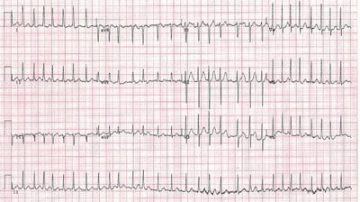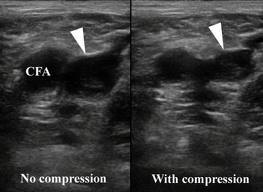Tranexamic acid is a simple little molecule, just a synthetic derivative of the amino acid lysine. But it’s also a potent pro-hemostatic drug that binds plasminogen and plasmin and stops the degradation of fibrin (the stuff in blood clots). Now…
Read MoreCompared with warfarin, the new agents significantly reduced all-cause and vascular mortality. The new direct-acting oral anticoagulants (DOACs; dabigatran, rivaroxaban, apixaban, and edoxaban) have been found to be noninferior to vitamin K antagonists in clinical trials of stroke prevention in…
Read MoreA new randomized controlled trial out of the UK that investigated 540 patients with ARDS from sepsis showed no benefit of statins. The study investigated the use of Simvastatin 80 mg/day vs placebo in patients with ARDS from sepsis and…
Read MorePreface: Nice summary of the changing pathogenic organisms causing severe sepsis. This summary also displays how improved sepsis recognition and management has decreased mortality from 40% to 28% over the last decade. Mortality decreased from 40% to 28% overall. Although…
Read MorePreface: The SPARCL trial made clinicians wary that high-dose statins may increase the risk of intracranial hemorrhage (ICH). This new observational study suggests that continued statin use after ICH appears to improve outcomes. The SPARCL trial (Stroke Prevention through Aggressive Reduction…
Read MorePreface: New study identifies 7 interventions to decrease the 30-day readmission rates. The most effective interventions involved case workers and Improving patients ability to provide self-care at home. Study design: Meta-analysis. Setting: Forty-seven studies in multiple locations. Synopsis: This study evaluated…
Read MoreRisk for postoperative adverse cardiovascular events was especially high during the first 9 months after stroke. If possible, you should wait at least 9 months and preferably 12 months after an ischemic stroke to undergo elective non cardiac surgery. Stroke…
Read MorePrevious trials have shown that catheter-directed thrombolysis (CDT) for proximal deep vein thrombosis has a lower rate of post-thrombotic syndrome compared with systemic anticoagulation alone. However, a new retrospective cohort study shows that the mortality rates are equivalent and the rates of transfusion,…
Read MoreNew guidelines from the International Antiviral Society recommend antiretroviral therapy for ALL HIV-infected patients Sponsoring Organization: International Antiviral Society–USA (IAS-USA) Target Population: Clinicians who treat HIV-infected patients Key Recommendations Antiretroviral therapy (ART) is recommended for all HIV-infected patients, including those with acute HIV infection—but…
Read MoreSponsoring Organization: Ontario Neurotrauma Foundation Target Population: Healthcare professionals and others who deal with concussion, including physicians, neuropsychologists, physical therapists, family, and schools/community sports organizations Background and Objective The panel used an evidence-based, systematic review to standardize diagnosis, assessment, and management of…
Read MoreChicago was a great location to host a Hospital Procedures Consultants Conference! I was looking forward to visiting Chicago for my first time. The Chicago weather was superb both during the day and at night. Chicago’s food scene is one…
Read MoreIn 2001, the Rivers trial showed that Early Goal Directed Therapy for septic shock resulted in a 16% absolute mortality risk reduction1. In the treatment arm of this trial, septic patients with a lactate above 4 mmol/L or systolic blood…
Read MoreFrequently the combination of a serum D-dimer level and compression ultrasound testing can differentiate between a residual venous clot and an acute recurrent DVT. However, sometimes the results are equivocal and in these situations an MRI direct thrombus imaging can…
Read MoreThis is a nice review on azithromycin to prevent chronic obstructive pulmonary disease exacerbations (COPD exacerbations). A recent Cochrane analysis and a retrospective VA study were both found that continuous azithromycin use decreased the incidence of COPD exacerbations in patients…
Read MoreMy second Hospital Procedures Consultants Conference took place in Denver, Colorado! I was very excited to visit Denver, as it was my first time to the city. Denver was beautiful in June. The day time weather was warm with plenty…
Read MoreCategories
- ACLS (1)
- Arterial line (33)
- Cardiovascular diseases (77)
- Central line (55)
- Chest Tube (39)
- Dermatology (4)
- Emergency Procedures (139)
- Endocrinology (6)
- Endotracheal Intubation (36)
- Events (24)
- FAST Exam (12)
- Featured (113)
- Featured Procedure (42)
- Gastrointestinal diseases (32)
- Ginecology (3)
- Glidescope Intubation (21)
- Hematology (33)
- Hospital Procedures (85)
- Infections (32)
- Intraosseous line (8)
- King Tube (27)
- Laryngeal Mask Airway (18)
- Lumbar Puncture (36)
- Mechanical Ventilation (34)
- Medical General (95)
- medical procedures (258)
- Needle Decompression (6)
- Nephrology (11)
- Neurological diseases (12)
- Oncology (4)
- Paracentesis (32)
- Pericardiocentesis (3)
- Procedural Sedation (19)
- Respiratory diseases (85)
- RUSH Exam (8)
- Thoracentesis (37)
- Traumatology (24)
- Travel (27)
- Ultrasound-Guided Peripheral IV (13)












